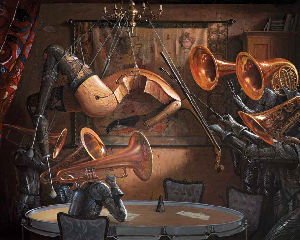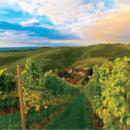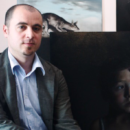
The new art center of the world – Louvre Abu Dhabi
Situated in a secluded area of the modern oriental fairytale, the most recently built art museum in the world: Louvre Abu Dhabi – accomodates a heterogeneous collection that aims to reflect humanity’s entire creative force. From the Neolitic civilization to contemporary art, the museum illustrates the intricate current of ideas and the way in which art forms emerged simultaneously in different area of the world and then met and influenced each other.
It took over ten years to complete the building, period during which the French architect Jean Nouvel kept on tweaking at the the plan. Initially, he was solicited by the Abu Dhabi’s Tourism and Culture Authority to be part of a group of architects, together with Norman Foster, Frank Gehr and Zaha Hadid, in order to turn Saadiyat into an important cultural hub. The museum’s architecture is inspired by the Arabic medinas, located under palm trees, resembling an oasis. The dome is made out of of a steel and aluminium indention, which makes us think about mashrabiya, an Arabic traditional technique of windows’ design. The exterior invites visitors to spend time admiring the astonishing scenery, and those who do not intend to visit the galleries can also appreciate the space.

Louvre Abu Dhabiís plaza © Louvre Abu Dhabi, Photography: Mohamed Somji
A pilgrimage for art lovers
If in museums such as the British Museum, the MET or Musée du Louvre Paris there are special spaces dedicated to Greek sculpture or Chinese art, in Louvre Abu Dhabi our history is being told using twin artefacts. Therefore, in the 12 sections of the museum, some of the most important cultural changes are being exhibited, evolutions and normative disruptions, but also the influence and the circulation of cultural ideologies and artistic ideologies from different corners of the world
The idea belongs to the Curator, Jean-François Chainier, who found a series of Chinese jade axes, which were almost identical to those discovered in the North-West of France by his team of archaeologists. All of them were dated back to Neolitic, almost 7000 years before our age. Therefore, his vision concentrates upon the creative human conscience, in a universal sense. Globalization, he says, “wasn’t invented in the 60’s or in the XVIth century or by the romans – it has always been there”.[1]
The visitors can see totems with sun symbols, made by Buddhists in India or by the Mayas in Central America, or they can admire china bowls decorated with blue cobalt, a representative color for the Islamic world. How close do you think they stand by Yves Klein’s paintings?

Salvator Mundi in the universal pantheon
The itinerary will become even more interesting once the lost and found masterpiece by Leonardo da Vinci, Salvator Mundi (1490), will find its place in the museum’s galleries. Just some days ago, Louvre Abu Dhabi announced that the Department for Culture and Tourism is the one that bought the work with 450 million dollars, although an initial report named the Saudi Prince Bader bin Abdullah bin Mohammed bin Farhan al-Saud as buyer. In an official press release issued by the Saudi Arabia Embassy in Washington, the Saudi Prince admits that he was only an intermediary buyer.

Salvator Mundi is not yet the only masterpiece signed by the Renaissance artist that will be exhibited in the museum. Musée du Louvre Paris lent them La belle ferronnière (1490), as part of the one million dollars agreement they closed in 2007.
Among the famous works that can be admired at Louvre Abu Dhabi we name Claude Monet’s Gare Saint-Lazare (1877), Paul Gaugain’s Jeunes Lutteurs – Bretagne (1888), René Magritte’s The Subjugated Reader (1928), many works by Henri Matisse, a Van Gogh autoportrait and a work by Picasso, which has never been exhibited before.
This museum of globalization documents the human creative products since prehistory until now. The galleries are disposed chronologically and the first one is “The Great Vestibule”, followed by the first villages, the first great powers, civilisations and empires, universal religions, Asian trade routes, from the Mediterranean to the Atlantic, cosmography, the world in perspective, the magnificence of the court, a new art of living, a modern world, challanging modernity and a global stage.[2]
The museum can be visited Tuesday – Sunday, from 10:00 to 20:00, and a full ticket costs 60 AD, the equivalent of 13 euros. From 21st December 2017 until 7th April 2017 you can visit From One Louvre to Another, an incursion in the Louvre Paris history, from the art collection of King Louis XIV to the French Revolution. The exhibition’s curators are Jean-Luc Martinez, the president of Musée du Louvre, and Juliette Trey, curator of prints and drawings from the VIIth and VIIIth century.

Louvre Abu Dhabi – Photography Roland Halbe
[1] https://www.1843magazine.com/culture/an-oasis-of-art
[2] https://www.louvreabudhabi.ae/en/art/museum-galleries









